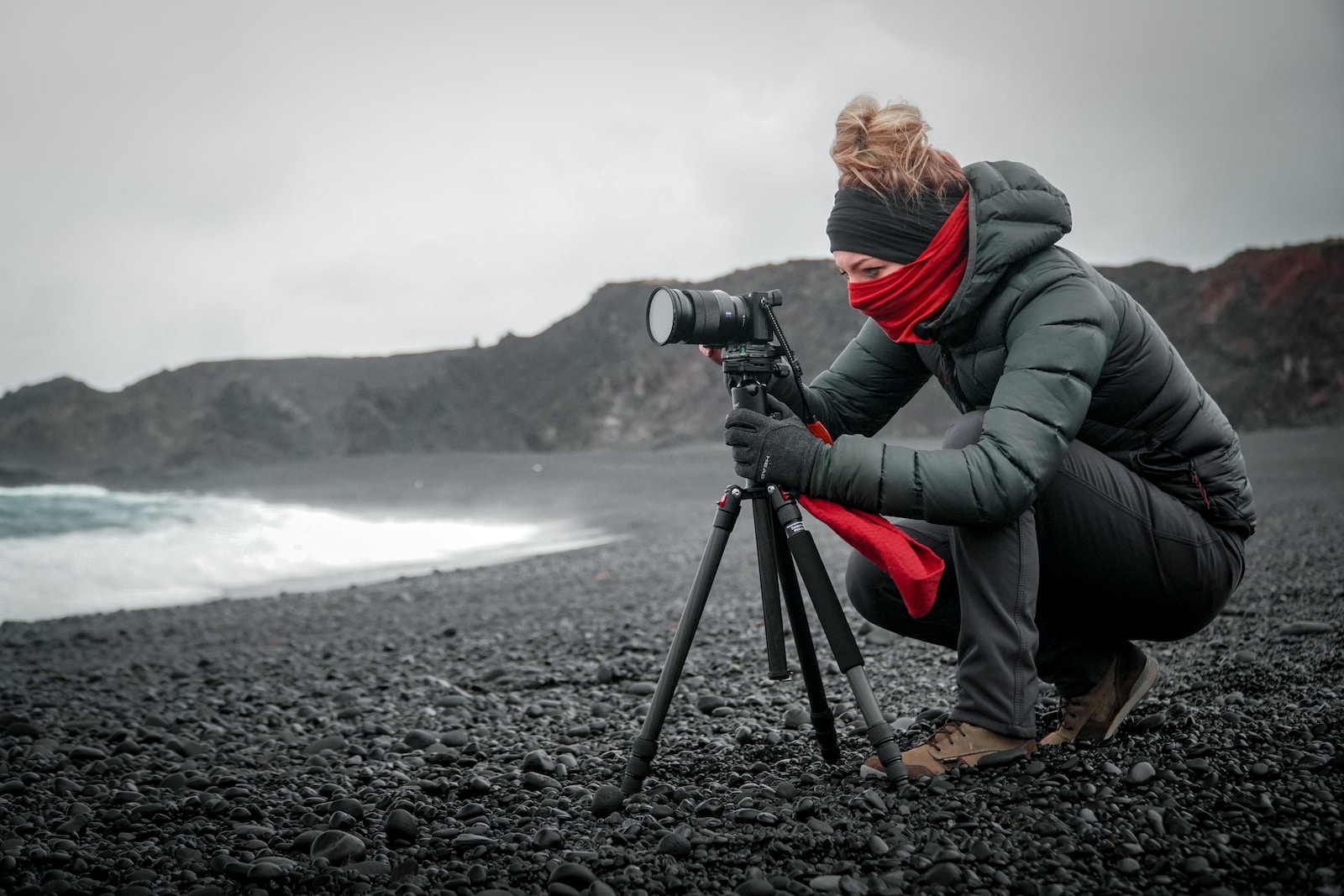Welcome to our blog where we delve into the fascinating world of professional video tripods. If you’re a cinephile or a budding filmmaker looking to up your cinematography game, you’ve come to the right place. In this post, we’ll decode the important role that professional video tripods play in capturing high-quality videos. From defining what makes a tripod “professional,” to exploring the various types available, we’ve got you covered. So, let’s dive in and explore the world of professional video tripods together!
Table of Contents
- Understanding the Basics
- Frequently Asked Questions
- 1. What makes a professional video tripod different from a regular tripod?
- 2. Why is a professional video tripod important in cinematography?
- 3. Can I use a regular camera tripod for videography?
- 4. What factors should I consider when choosing a professional video tripod?
- 5. Are professional video tripods suitable for outdoor shoots?
- 6. How can I achieve smooth panning and tilting with a professional video tripod?
- 7. Should I invest in additional accessories for my professional video tripod?
- Wrap Up
Understanding the Basics
Before we dive into the intricacies of professional video tripods, let’s first understand the basic components that make them an indispensable tool for cinematographers. A video tripod typically consists of three main parts: the legs, the head, and the mounting plate. The legs provide stability and adjustability, while the head allows for precise pan and tilt movements. The mounting plate is where you attach your camera securely to the tripod.
Choosing the Right Tripod
Not all tripods are created equal, and when it comes to professional video tripods, the quality and features matter. When choosing the right one for your needs, consider factors such as load capacity, height range, leg stability, and flexibility. Additionally, pay attention to the type of head, whether it’s a fluid head for smooth video panning, a ball head for versatility, or a geared head for precise adjustments.
Benefits of Professional Video Tripods
Investing in a professional video tripod can elevate your cinematography to new heights. Here are some key benefits that make them a worthy addition to your gear:
- Stability: Professional tripods provide rock-solid stability, minimizing camera shake and delivering smoother footage.
- Precise Movements: With a fluid head and adjustable controls, you can achieve precise pan and tilt movements, adding a professional touch to your shots.
- Increased Flexibility: Professional tripods often come with adjustable legs, allowing you to shoot at different heights, angles, and even on uneven terrain.
- Time Efficiency: Having a reliable tripod means spending less time adjusting and readjusting your camera setup, allowing you to focus more on capturing the perfect shot.
Tips for Using Professional Video Tripods
Now that you’ve ventured into the world of professional video tripods, here are some valuable tips to maximize their potential:
- Choose the Right Height: Adjust your tripod to a comfortable height that puts the camera at eye level or the desired perspective for your shot.
- Level Your Tripod: Ensure the tripod is perfectly level to avoid any unwanted tilts or slants in your footage.
- Use a Fluid Head for Smooth Movements: A fluid head allows for seamless panning and tilting, providing cinematic shots with ease.
- Explore Alternative Mounting Options: Some tripods offer additional mounting options, such as a monopod or slider attachment, expanding your creative possibilities.
Did you know that the first camera tripod was invented in the mid-1800s? It consisted of a wooden base and a three-legged support system, serving as the foundation for today's modern video tripods.
A Relevant Case Study: Overcoming Challenges with Professional Video Tripods
When it comes to cinematography, having the right equipment is crucial for capturing high-quality videos. Professional video tripods play a vital role in ensuring stability and smooth movement during shoots. Let’s take a look at a relevant case study and the challenges that were overcome with the use of these tripods.
The Challenge: Unsteady Shots and Shaky Footage
A professional videographer, John, was assigned to shoot a documentary in rugged terrain. The uneven surfaces and unpredictable weather conditions made it challenging to maintain steady shots. Handheld filming resulted in shaky footage that was both visually jarring and compromised the overall quality of the video.
The Solution: Professional Video Tripods
In order to overcome this challenge, John decided to invest in professional video tripods. These tripods offer stability and a strong foundation for cinematographers to capture smooth and jitter-free footage. With adjustable legs and innovative design features, they enable videographers to set up their equipment on any terrain, whether it’s rocky, sandy, or even on uneven surfaces.
The Benefits: Enhanced Cinematic Experience
By using professional video tripods, John was able to achieve the desired cinematic experience for his documentary. The stability provided by the tripods eliminated any shakiness or unwanted movements, resulting in visually pleasing and professional-looking footage. The smooth panning and tilting motions added a level of professionalism to the shots, making the audience feel fully immersed in the story being told.
Not only did the professional video tripods improve the overall quality of the footage, but they also enhanced the efficiency of the filming process. John could easily set up and adjust the tripod’s height, allowing him to capture shots from various angles without wasting valuable time. This versatility and ease of use proved to be invaluable, especially in dynamic shooting environments.

Frequently Asked Questions
1. What makes a professional video tripod different from a regular tripod?
A professional video tripod is specifically designed to provide stability and smooth movements while capturing video footage. It typically features fluid heads, adjustable height, and sturdy construction to handle professional-grade video cameras and equipment.
2. Why is a professional video tripod important in cinematography?
A professional video tripod plays a crucial role in cinematography by providing stability to the camera, allowing filmmakers to capture smooth and steady shots. It also enables precise panning and tilting movements, ensuring professional-looking footage that enhances the overall cinematic experience.
3. Can I use a regular camera tripod for videography?
While a regular camera tripod may work for basic video recording, it lacks the smoothness and stability required for professional videography. Professional video tripods are designed with fluid heads, counterbalance systems, and adjustable tension controls to ensure precise and controlled movements necessary for cinematic shots.
4. What factors should I consider when choosing a professional video tripod?
When selecting a professional video tripod, consider factors such as load capacity, height range, stability, fluid head quality, and ease of use. Additionally, factors like portability, durability, and compatibility with your camera equipment should also be taken into account.
5. Are professional video tripods suitable for outdoor shoots?
Absolutely! Many professional video tripods are designed to withstand outdoor conditions. Look for features like spiked feet for stability on uneven terrain, weather-resistant materials, and lightweight yet sturdy construction, which makes them suitable for various shooting locations.
6. How can I achieve smooth panning and tilting with a professional video tripod?
To achieve smooth panning and tilting movements, ensure that your professional video tripod has a fluid head system. A fluid head provides adjustable drag controls, which allow for precise movement and smooth transitions. Practice your movements slowly and steadily to achieve professional-looking results.
7. Should I invest in additional accessories for my professional video tripod?
Depending on your specific needs, you may consider investing in accessories such as a quick-release plate, a leveling base, or a remote control system. These accessories can enhance the functionality and versatility of your professional video tripod, offering more convenience and creative possibilities.
Wrap Up
Professional video tripods play a crucial role in cinematography, providing stability and precision for video capturing. As a filmmaker or videographer, investing in a reliable and high-quality tripod is essential for achieving professional-looking results.
In this blog, we explored the different types of professional video tripods, their features, and considerations to keep in mind when choosing one. Remember to prioritize stability, weight capacity, and adjustability for optimal performance.
Understanding the importance of professional video tripods will undoubtedly enhance your cinematography skills. So, don’t hesitate to explore the market for the perfect tripod that suits your needs.
We hope this blog has been helpful in decoding professional video tripods. Now it’s your turn – tell us about your experiences and recommendations in the comments below!
